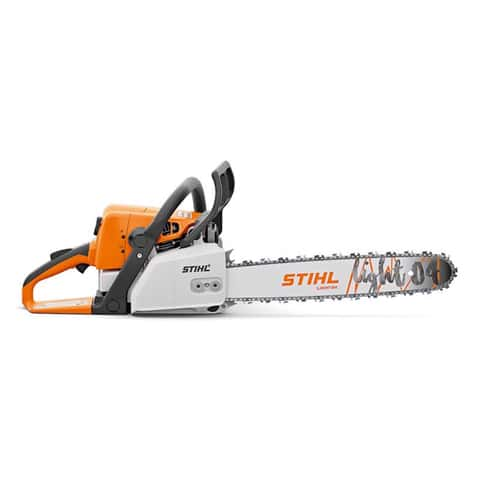Father’s Day is around the corner, and Weathers Ace Hardware of Madison offers an incredible selection of gifts that are sure to delight any dad. Whether your father is a DIY enthusiast, a grill master, or simply loves spending time outdoors, you will find the perfect gift at our store. With quality products and personal service, Weathers Ace Hardware is your one-stop-shop for all your Father’s Day needs.
Adam Pierce, owner of Weathers Ace Hardware, emphasizes the importance of finding the right gift for your loved ones: “At Weathers Ace Hardware, we understand the importance of making Father’s Day special. That’s why we’ve curated a selection of top-notch products that cater to the diverse interests of dads everywhere.”
STIHL MS 250 18 in. 45.4 cc Gas Chainsaw
The STIHL MS 250 Chainsaw is perfect for dads who love working with wood. Its exceptional power-to-weight ratio makes it ideal for firewood processing and clearing tasks. With features like an easy-access air filter cover, rear hand guard, and Master Control Lever, this chainsaw combines convenience and safety. It’s a professional-grade tool with a 1-year warranty, making it a reliable choice for any father.
“This chainsaw’s reliability and performance are unmatched, making it a favorite among our customers,” says Adam Pierce.
Oregon AdvanceCut 27857 16 in. Bar and Chain Combo
For dads who already own a chainsaw, the Oregon AdvanceCut Bar and Chain Combo is an excellent upgrade. This 16-inch combo offers a low-vibration and low-kickback experience, enhancing safety and performance. It’s compatible with various brands and designed for durability, making it a perfect gift for any chainsaw owner.
“The Oregon AdvanceCut is a must-have for anyone looking to enhance their chainsaw’s performance,” says Angelo Bocchino, Business Account Manager.
EGO Power+ Peak Power SNT2114 Snow Blower Kit
The EGO Power+ Snow Blower Kit is perfect for dads who tackle winter head-on. With Peak Power technology and a high-efficiency brushless motor, it delivers gas-like performance without the noise or fumes. Its ability to throw snow up to 40 feet and clear large driveways makes it a winter essential.
“This snow blower is a game-changer for winter maintenance,” notes Tiffany Hamilton, Manager.
DEWALT 20V MAX Grabo Lifter
The DEWALT 20V MAX Grabo Lifter is an innovative tool for dads involved in construction or heavy lifting tasks. With a lift capacity of up to 265 lbs and a powerful vacuum pump, it makes lifting materials like glass, tile, and wood a breeze.
“This lifter is a versatile tool that any handyman would appreciate,” says Adam Pierce.
Weber Slate Rust-Resistant 3 Burner Liquid Propane Outdoor Griddle
The Weber Slate Griddle is a fantastic gift for dads who love to cook outdoors. With its pre-seasoned carbon-steel cooktop and rust-resistant design, it offers even heating and a cooking experience that reaches over 500 degrees.
“This griddle is perfect for any dad who enjoys outdoor cooking,” says Angelo Bocchino.
ACE HDPE Wheelbarrow 6 cu ft
The ACE HDPE Wheelbarrow is a sturdy and practical gift for dads who enjoy gardening or landscaping. Its rust-resistant poly tray and steel handles ensure durability and comfort, making heavy-duty tasks easier.
“This wheelbarrow is built to last and makes a perfect gift for any gardening enthusiast,” says Tiffany Hamilton.
Craftsman 4 gal Corded Wet/Dry Vacuum
The Craftsman Wet/Dry Vacuum is ideal for dads who value cleanliness and organization. Its compact design and powerful motor make it perfect for auto-detailing, small projects, and home cleaning tasks.
“This vacuum’s versatility and power make it a must-have for any household,” says Adam Pierce.
Weber Genesis SA-E-330 3 Burner Liquid Propane Grill Indigo
The Weber Genesis Grill is an excellent choice for dads who love barbecuing. With features like the PureBlu burner system and stainless steel grates, it offers a superior cooking experience.
“This grill’s performance and durability are unmatched, making it a perfect gift for any grill master,” says Angelo Bocchino.
EGO Power+ HPW3204 Pressure Washer
The EGO Power+ Pressure Washer is ideal for dads who appreciate a clean home exterior. Its cordless design and powerful pressure make it perfect for cleaning decks, driveways, and more.
“This pressure washer’s efficiency and ease of use make it a top choice for any homeowner,” says Tiffany Hamilton.
Traeger Woodridge Wood Pellet Grill
The Traeger Wood Pellet Grill is perfect for dads who love the rich flavor of wood-fired cooking. With its user-friendly controls and customization options, it offers an exceptional grilling experience.
“This grill’s versatility and flavor-enhancing features make it a standout choice for any dad,” says Adam Pierce.
For all things Ace Hardware, please visit acehardware.com.

















